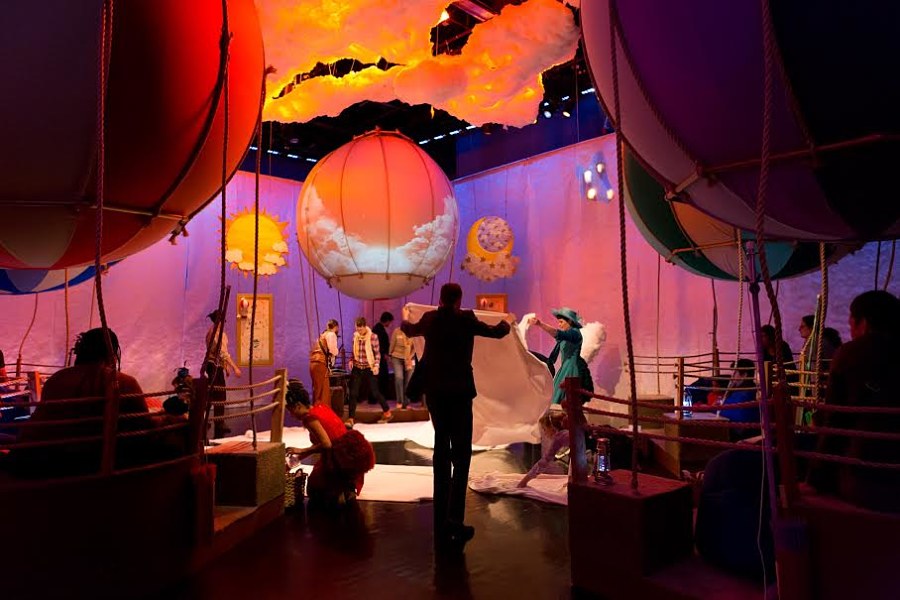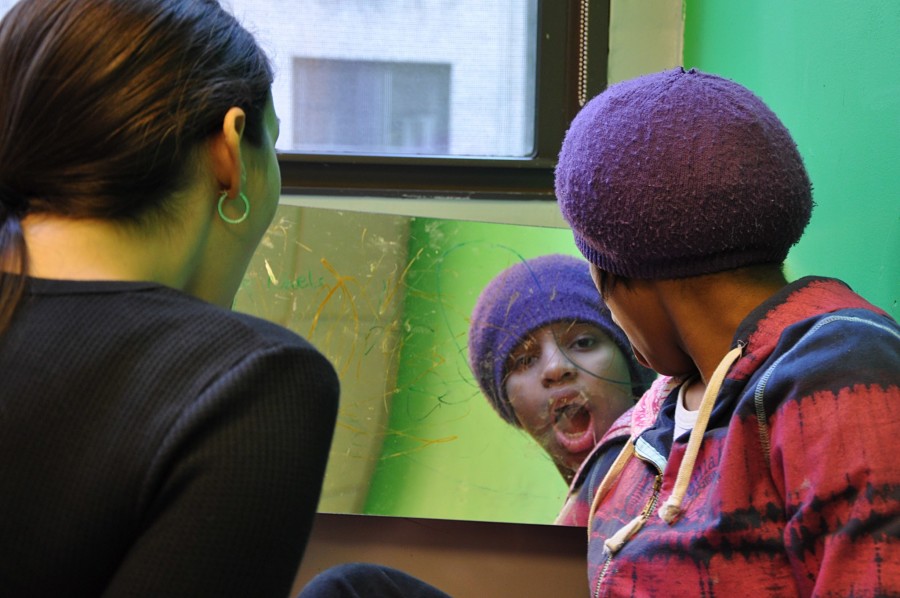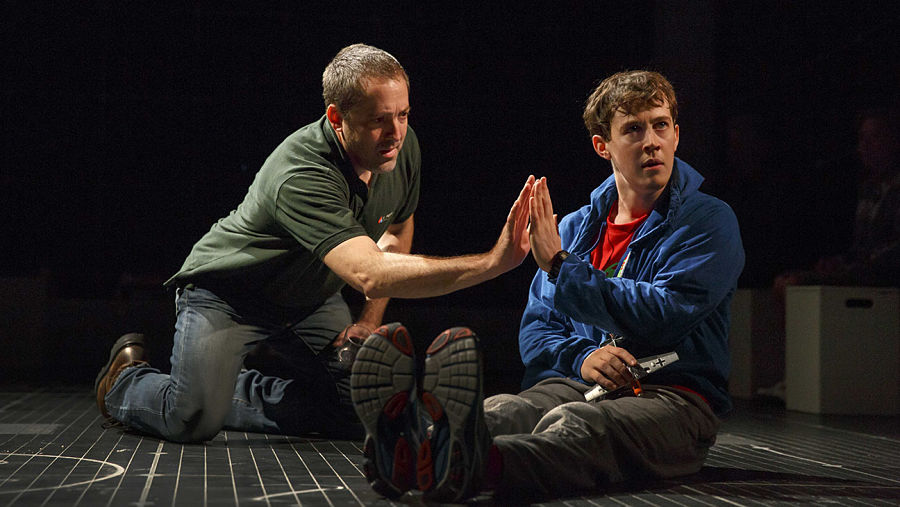How do we engage with community members who may not feel welcome at the theatre? How do we create work that’s relevant to them? How can we make a positive impact on their lives?
These are questions that theatremakers might ask in any community about the local population. But more than ever theatremakers in New York City are asking these questions in reference to people with autism, particularly kids. Autism spectrum disorder is defined by the Centers for Disease Control and Prevention as “a group of developmental disabilities that can cause significant social, communication and behavioral challenges,” and diagnoses are on the rise, with the CDC reporting that autism affects 1 in 68 children in the U.S. The arts, with their many opportunities for self-expression and varied forms of communication, have proven an effective way to help young people with autism express themselves and interact with others.
While making theatre for, with and about kids on the spectrum certainly comes with unique challenges, many theatremakers find a surprising amount of overlap between what they value as artists and what these kids value in a theatre experience. The following companies and productions are using theatre in a variety of ways to both reach this population and to create innovative artistic work.
This fall, Lincoln Center Education will premiere Up and Away, a commission developed by Trusty Sidekick Theater Company specifically for young audiences with autism. Trusty Sidekick, which is known for site-specific productions for family audiences, set out to create a production that spoke to this population while also maintaining the company’s aesthetic. Loosely inspired by Around the World in 80 Days, Up and Away will invite the audience to accompany the Fogg Family Balloon Society on their 1,000th flight, with each audience member sitting in his or her own life-sized hot air balloon.

“The theme we landed on was that the best stuff happens when you go off schedule,” says Trusty Sidekick artistic director Jonathan Shmidt Chapman. “That it’s great to maintain a schedule, but also to leave room for the possibility of the unknown, which we think is particularly exciting to explore with this population.”
Immersive environments and unconventional theatre experiences are already a hallmark of Trusty Sidekick’s work, but here, the company uses these tactics as a means to reach young audiences with varied and sometimes unpredictable needs. There’s a lot of one-on-one interaction between audience members and the 10-actor cast, and the performance space is designed for only 8 children and caregivers to see the show at a time. Tactile and sensory explorations are built into the show. Also, the story is episodic, much like the original Around the World in 80 Days, which allows kids who may not be able to follow the show’s complete narrative to still find it engaging and compelling from moment to moment.
“I think one of the exciting things as an artist has been to figure out how to tell a story and convey meaning in ways beyond language, in ways beyond the visual,” says Chapman. “How do you communicate the same idea through touch, through sound, and through visuals, repeat those things so that any audience member in the room will understand it?”

The staff of Actionplay, a nonprofit dedicated to bringing kids and adults on the autism spectrum equal access to education, arts and culture, has found similar challenges and opportunities in its work, which is devising original musicals with and for teenage performers with autism. Over the course of 25 weeks, the organization works with 12 teens and young adults to build their improvisation skills, write songs and create scenes based on a topic of the group’s choosing. These sessions culminate with a production that includes live music and full production values.
“It’s the social/communication piece that people with autism have the most difficulty with, and theatre really allows for people to come together and learn these skills in an organic way,” says executive director Aaron Feinstein, who also directs the shows.
In Actionplay’s most recent production, Revenge of the Godz, performers developed superhuman characters and scenes based on their specific interests, with the staff linking them together in an overall narrative. Education director Sara Hunter Orr emphasizes the collaborative role the performers play, and the ways in which the process is similar to that of many theatre companies that devise original work.
“It’s entirely devised by them,” says Orr. “They’re incredible improvisers. They’re able to come up with hilarious lines and have an idea of what their characters would say in the moment.”
Actionplay still must take into account the individual needs of their students, but as in any ensemble company, each participant brings something distinctive and special to the group. “We lead the group in a lot of creative movement exercises in our workshops so that our nonverbal communicators are able to express themselves as part of the collective,” says Orr.
Adds Feinstein, “Because we create things out of improvisation, it comes from our performers’ passions, and what you’re into is a great way to connect with somebody. There are so many times in the autism world where these passions and interests are taken away from kids and adults, but we really see that as their connection to the world, and what they bring to the world.”
On Broadway, the National Theatre’s production of The Curious Incident of the Dog in Nighttime is receiving praise from both critics and the autism community for its portrayal of Christopher Boone, a 15-year-old boy on the autism spectrum who describes himself as “a mathematician with some behavioral difficulties.” Based on the young adult novel by Mark Haddon, the play gives audiences a look into how Christopher’s mind works, simulating the extraordinary details he observes about the world and the overwhelming sensory overload of everyday sights, sounds and interactions. The production’s rave reviews, both in the US and the UK, went particularly to director Marianne Elliot (War Horse) and her inventive staging, and the show is nominated for several Tony Awards.
Among the Tony nominees is Alex Sharp, the actor who plays Christopher. Sharp does not have autism—nor does Luke Treadaway, who originated the role in London—and some autism advocates have voiced their frustration that an actor on the spectrum was not cast in the role. Still, many kids with autism and their families have said that they see their own experience in the show. In his article, “The Play That Took Me Inside My Autistic Son’s Head” for The Atlantic, James Sullivan writes, “For 16 years we’ve been locked outside my firstborn son’s head…but for two hours recently, we got a glimpse at some of the chaos that might be raging in there.”
Sharp has discussed in the media how kids with autism have had a variety of responses to the show, some closely identifying with Christopher. This past December, Curious Incident partnered with Theatre Development Fund’s Autism Theatre Initiative to present an “autism-friendly” performance of the show, softening some of the harsher light and sound cues, creating a quiet activity space in the lobby, and allowing audience members to leave and reenter the theatre as needed, making the show the first non-musical on Broadway to offer such a performance.
Inclusion and access are at the core of all of these theatre works, crucial elements of almost any successful theatre experience for almost anyone.
“Really, what’s happening is the theatre is saying, ‘You are welcome here, anything your child does or you do is welcome, and this is a safe space for you,’” says Chapman. Feinstein echoes this sentiment: “The key word here is respect; we’re trying to create a culture of respect among all performance institutions.”
While kids with autism do have individualized needs, and creating theatre with them in mind comes with its own set of difficult questions, the overall goals of acceptance, play and respect are ones that all theatres might benefit from in developing new work.
Emma Halpern is the co-artistic director of New York City Children’s Theater.


